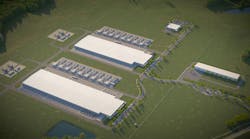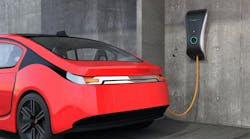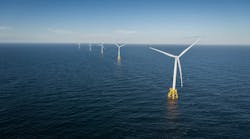As energy efficiency has become a key driver across most segments of the electrical industry, the importance of better tools and better codes has come to the forefront. Energy-efficient retrofits in technologies such as lighting, building automation and high-efficiency drives and motors were rare bright spots in the industry through the recent recession, keeping many distributors, reps and manufacturers busy while construction and most other sectors lagged.
Recent work by the U.S. Department of Energy (DOE) and in particular its office of Energy Efficiency and Renewable Energy (EERE), as well as various other groups, give everyone in the industry important new tools and information to work with in finding and funding efficiency upgrades.
The DOE this week issued a final ruling establishing the latest version of ASHRAE’s 90.1 building efficiency standard as the benchmark for federal buildings. Beginning in July 2014, all new construction of federal office buildings and federal-built multi-family high-rise housing must meet ASHRAE 90.1-2010. DOE estimates that the new standard will save 18.2 percent more source energy than the previous standard (ASHRAE 90.1-2007) and cut energy costs by $1.74 billion over 30 years.
The federal government is pushing hard on upgrading the efficiency of its existing buildings as well. Eaton Corp. announced this week that it landed one of the biggest such jobs — when its Energy Solutions Group won a $3.2 million contract to upgrade lighting systems at the Pentagon (see story, page 4).
Also this week, the U.S. Energy Information Administration launched a new effort to inventory state energy efficiency programs. Available at the administration’s website at www.eia.gov, the inventory is the first to provide detailed summaries of energy efficiency evaluation reports—commonly called evaluation, measurement, and verification (EM&V) reports—on electricity and natural gas programs.
The American Council for an Energy-Efficient Economy (ACEEE), Washington, D.C., finds that building codes and state energy-efficiency programs are among the areas showing improvement in making the U.S. economy more efficient. The group this month introduced a report that evaluates the energy efficiency of the United States based on 15 criteria. ACEEE intends to track the measures annually to provide an indicator of whether the nation’s energy use is becoming more efficient over time and in what ways.
“ACEEE’s energy efficiency indicators demonstrate that the United States is becoming more energy efficient, but the improvements we measured are generally modest, indicating that our economy overall has made only moderate progress,” the ACEEE said in the report. “Five indicators show some meaningful progress: state energy efficiency program savings; reductions in energy use in residential buildings; standards for fuel economy; building codes; and standards for appliances.”
ACEEE found that commercial buildings in the United States consumed an average of 214,000 Btu per square foot in 2012, a 3% improvement from 2011. Residential buildings, meanwhile, posted a 6% improvement in efficiency. ACEEE also found that 31 states currently have updated building codes for both residential and commercial buildings.
In April, the DOE published protocols for evaluating energy efficiency savings from various building technology upgrades, including commercial and residential lighting and controls, as part of its Uniform Methods Project led by the National Renewable Energy Laboratory. The protocols provide a standardized way of calculating energy savings from the various technologies over time for measurement and verification programs.
Even more significantly, the EERE’s Building Technologies Office last month released a new Buildings Performance Database that includes verified energy performance data on 65,000 buildings, a massive data set that will get bigger over time and allow “big data” analyses of how buildings behave in the real world. The objective is to help building owners and investors evaluate the financial impact of energy-efficient alternatives using hard data instead of models.
At a conference on energy-efficiency financing hosted in June by the ACEEE, the group pointed to the DOE’s Buildings Performance Database among significant developments to bridge a “data divide” that has hampered development of financial tools for energy efficiency projects.
In remarks June 21, Kathleen Hogan, DOE’s deputy assistant secretary for energy efficiency, said among the steps DOE is taking in pursuit of President Obama’s recently outlined Climate Action Plan will be initiating a partnership with the private sector to work towards a standardized contract to finance federal investments in energy efficiency.
Legislation now in the Senate seeks to further support development of model building codes and their adoption by the states. The Energy Savings and Industrial Competitiveness Act of 2013 (S. 761), was introduced by Senators Jeanne Shaheen (D-N.H.) and Rob Portman (R-Ohio) in April. The bill was approved by the Senate Energy and Natural Resources Committee in May, and is awaiting introduction bill on the Senate floor.








